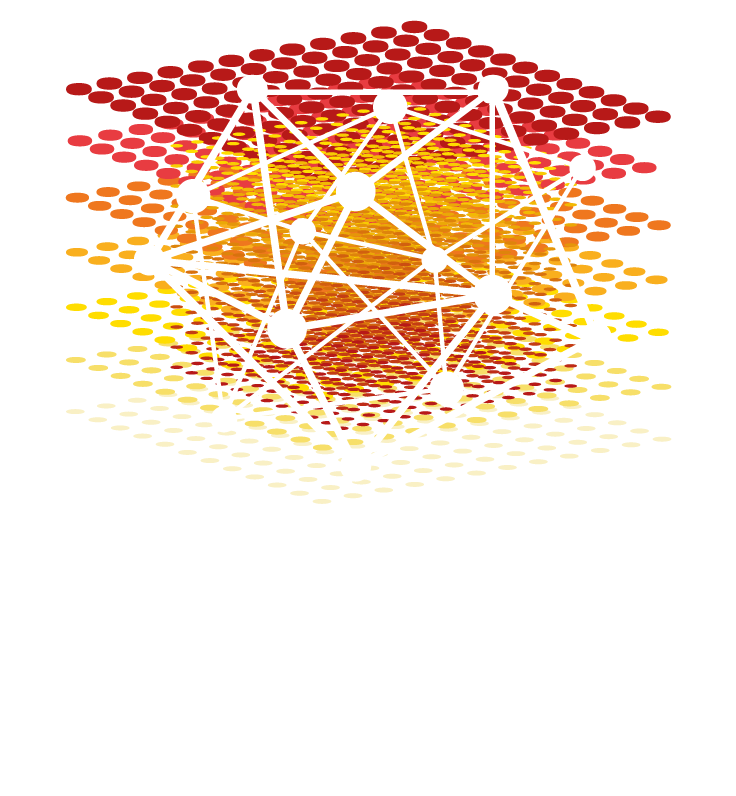Program of the Conference
The program is in Menton time zone (CET)
Tutorial Schedule
Conference Schedule
Day 1 - Morning (8:30 - 12:50) - Tue, 28 Nov
Day 1 - Afternoon (14:15 - 19:00) - Tue, 28 Nov
|
28 November, 2023
14:15-15:45 Session Oral 2A: Human Behavior Chair: Alessandro Galeazzi
14:15-15:45 Session Oral 2B: Network Analysis Chair: Fintan McGee
14:15-15:45 Session Oral 2C: Synchronization
15:45-16:20 Session Poster2: A [1 - 12] Information Spreading in Social Media B [13 - 17] Diffusion & Epidemics - C [18-24] Machine Learning & Networks - (Coffee Break)
16:20-17:00 Keynote Speaker 2: Manlio De Domenico – An Emerging Framework for the Functional Analysis of Complex Interconnected Systems Chair: Luis M Rocha
17:00-19:00 Session Oral 3A: Dynamics on/of Networks Chair: Romualdo Pastor-Satorras
17:00-19:00 Session Oral 3B: Network in Finance & Economics Chair: Manlio De Domenico
17:00-19:00 Session Oral 3C: Multilayer/Multiplex Chair: Davide Vega D'Aurelio
|
Day 2 - Morning (8:45 - 12:50) - Wed, 29 Nov
|
29 November, 2023
08:45-09:25 Keynote Speaker 3: Kathleen M. Carley – Coupling in High Dimensional Networks
Chair: Zachary Neal
09:25-10:15 Session Lightning L2 - Community Structure - Dynamics on/of Networks
Chair: Giuseppe Mangioni
10:15-10:50 Session Poster3: A [1 - 9] Community Structure – B [10 - 19] Social Networks – C [20 - 24] Infrastructure Networks (Coffee Break)
10:50-12:50 Session Oral 4A: Information Spreading in Social Media
Chair: Marco Viviani
10:50-12:50 Session Oral 4B: Machine Learning & Networks
Chair: Mohammed El Hassouni
10:50-12:50 Session Oral 4C: Networks in Finance & Economics
Chair: Takayuki Mizuno
|
Day 2 - Afternoon (14:15 - 19:00) -Wed, 29 Nov
|
29 November, 2023
14:15-15:45 Session Oral 5A: Structural Network Measures
Chair: Konstantin Avrachenkov
14:15-15:45 Session Oral 5B: Infrastructure Networks
Chair: Mirko Degli Esposti
14:15-15:45 Session Oral 5C: Biological Networks
Chair: Pietro Hiram Guzzi
15:45-16:20 Session Poster4: A [1 - 8] Human Behavior – B [9-12] Link Analysis & Ranking – C [13 - 25] Dynamics on/of Networks (Coffee Break)
16:20-17:00 Keynote Speaker 4: Michael Bronstein – Physics Inspired Graph Neural Networks
Chair: Tomaso Aste
17:00-19:00 Session Oral 6A: Diffusion & Epidemics
Chair: Brennan Klein
17:00-19:00 Session Oral 6B: Community Structure
Chair: François Théberge
17:00-19:00 Session Oral 6C: Temporal Networks
Chair: Carlo Vittorio Cannistraci
|
Day 3 - Morning (8:45 - 12:35) - Thurs, 30 Nov
|
30 November, 2023
08:45-09:25 Keynote Speaker 5: Tao Zhou – Recent Debates in Link Prediction
Chair: Jean Loup Guillaume
09:25-10:15 Session Lightning L3 - Community structure - Human Behavior
Chair: Matteo Zignani
10:15-10:50 Session Poster5: A [1 - 12] Machine Learning & Networks - B [13 - 17] Biological Networks - C [18 - 20] Networks in Finance & Economics - (Coffee Break)
10:50-12:35 Session Oral 7A: Social Networks
Chair: Alessandro Galeazzi
10:50-12:35 Session Oral 7B: Dynamics on/of Networks
Chair: Gerrit Großmann
10:50-12:35 Session Oral 7C: Networks Analysis
Chair: Jose Nacher
|
Day 3 - Afternoon (14:00 - 18:00) -Thurs, 30 Nov
|
30 November, 2023
14:00-15:30 Session Oral 8A: Diffusion & Epidemics
Chair: James O'Malley
14:00-15:30 Session Oral 8B: Network Embedding
Chair: Milos Kudelka
14:00-15:30 Session Oral 8C: Resilience
Chair: Roberto Interdonato
15:50-16:30 Keynote Speaker 6: Danai Koutra – Advances in Graph Neural Networks: Heterophily and Beyond
Chair: Giulio Rossetti
16:30-17:45 Session Oral 9A: Link Analysis & Ranking
Chair: Akrati Saxena
16:30-17:45 Session Oral 9B: Ecological & Earth Science Networks
Chair: Gergely Palla
16:30-17:45 Session Oral 9C: Network Analysis
Chair: Marco Grassia
|
